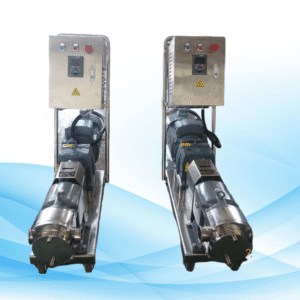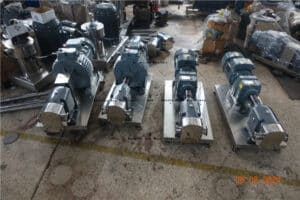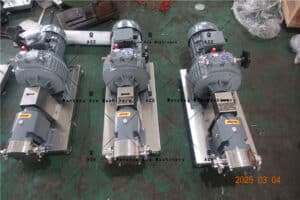When Picking the Best Pump for Your Industrial Application
When picking the best pump for your industrial application, it often boils down to understanding the different types available. This blog post will compare two commonly used pumps in industries with efficient and reliable fluid transfer — circumferential piston pumps (CPPs) and lobe pumps.
Explanation of Circumferential Piston Pumps
What Are Circumferential Piston Pumps?
Circumferential piston pumps (CPPs) are also known as rotary external gear pumps. They have high efficiency rates and can handle viscous fluids more precisely than any other type of positive displacement pump. The fluid is moved through these units by pistons that move around within a cavity created by an outer rotor or ring-shaped shell.
Key Advantages
- High Efficiency: These machines are very effective, especially when dealing with thick liquids, which could be vicious. Minimal slippage comes forth due to their tight clearances, hence ensuring that almost all liquid is displaced during each stroke made by the piston.
- Low Shear: CPP’s gentle pumping action makes it suitable for transferring fragile materials such as creams, gels or emulsions whose structure can easily be altered by aggressive methods of pumping like those involving high speeds and pressure changes.
- Durability: CPP’s robustness enables them to withstand harsh conditions, where they may be subjected to prolonged usage under high pressures without failing.
Usual Applications
- Food industry – dairy products handling; syrups transportation; sauces pumping etc.
- Pharmaceutical manufacturing processes, where product integrity must not be compromised at any stage.
- Cosmetics industry – lotions, creams etc. need to be pumped from one place to another, therefore this type of equipment becomes necessary.
Understanding Lobe Pumps

What Are Lobe Pumps?
On the other hand, lobe pumps are a form of positive displacement pump that operates by using two rotating lobes to propel fluid through its chamber. When these lobes rotate against each other they create cavities which trap liquids then move them from an inlet port where they were drawn in from, towards an outlet port through which they will be discharged into another part of the system or conveyed outside altogether.
Key Advantages
- Versatility: Lobe pumps can handle a wide range of fluids, from low to high viscosity, including those with solid particles.
- Hygienic Design: They are often used in applications that require strict hygiene standards, as they are easy to clean and sterilize.
- Smooth Flow: Lobe pumps provide a smooth pulse-free flow rate, which is important for accurate delivery in certain types of processes.
Typical Applications
- Biotech and pharmaceutical industries where hygiene and sterility are paramount.
- Handling of chunky materials such as fruit pieces in yogurt or soups during food processing.
- Chemical processing needs robustness from pumps dealing with different types of fluids.
Circumferential Piston Pump vs Lobe Pump — Which Is Better?
The answer to whether you should choose a circumferential piston pump or lobe pump over the other largely depends on what specific application requirements you have. If your operation involves handling delicate substances with high viscosity levels that need minimal shear stress applied during transfer, then CPPs would be most suitable for such tasks due to its capability of maintaining product integrity which makes it very useful in industries like pharmaceuticals and cosmetics.
However, if versatility is key where various kinds of liquids may have presence, even those containing solids, plus demand for hygienic designs, then lobe pumps become ideal candidates because they offer this flexibility together with ease of cleaning, especially within the food industry where such features are highly valued. Another important factor could also be based upon chemical compatibility between different fluid types being pumped as well as non-corrosiveness properties displayed by some materials used during construction stages for these devices could make one better than another based purely on reactive nature between them when mixed together under given conditions (e.g., acids mixed with bases, etc.).
Conclusion
Lobe pump vs Circumferential Piston Pump is not an easy choice. They are both excellent devices that can effectively perform fluid transfers in various industrial contexts. By understanding how each pump works and where it is applicable, one will be able to optimize processes such as efficiency improvement or product quality assurance, depending on what they need most.
If you need more information about picking the correct pump for your needs, don’t hesitate to contact our experts team that will help you through the process.


















